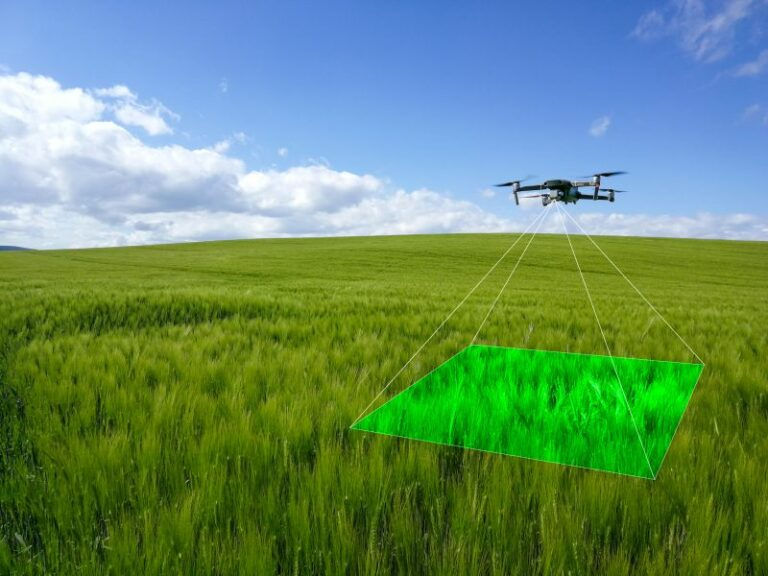Unveiling the Magic: How Drones Work - A Step-by-Step Guide
- Milad Mir

- Jan 24, 2024
- 3 min read
Drones, those remarkable flying machines that have transformed industries and captured our imaginations, operate on a fascinating combination of technology, engineering, and precision. In this comprehensive guide, we'll peel back the curtain to reveal the inner workings of drones, from takeoff to landing.

1. Power Source: The Heart of the Drone
Every drone needs a reliable power source to take to the skies. Most drones use lithium-polymer or lithium-ion batteries, providing the necessary energy for propulsion and onboard systems. The battery's capacity determines a drone's flight time, typically ranging from 20 to 30 minutes for consumer drones.
2. Propellers: The Force of Lift
Drones rely on multiple propellers to generate lift and control their movement. Quadcopters, the most common consumer drones, have four rotors. By spinning these propellers at varying speeds, a drone can ascend, descend, move forward, backward, and turn.
3. Flight Controller: The Drone's Brain
At the heart of every drone is a flight controller, essentially the drone's brain. This device processes data from various sensors and sends commands to the motors to adjust the drone's orientation and speed. It keeps the drone stable and responsive to user inputs.
4. GPS and Sensors: Navigational Aids
Drones are equipped with GPS (Global Positioning System) receivers, which provide precise location data. GPS helps drones maintain their position and follow pre-programmed flight paths. In addition to GPS, drones use various sensors, such as accelerometers and gyroscopes, to measure movement and orientation.
5. Remote Control: Pilot in Command
For consumer drones, a remote control or smartphone app is used to communicate with the drone. These devices send signals to the flight controller, enabling the pilot to control the drone's flight mode, direction, and altitude. More advanced drones can also be controlled via dedicated software on a computer.
6. Camera Systems: Capturing the World
Many drones are equipped with cameras for photography and videography. These cameras vary in quality, with some capable of capturing high-resolution images and 4K video. Advanced drones often have gimbals, which stabilize the camera during flight for smooth, professional-quality shots.
7. Telemetry: Real-Time Data
Telemetry is the process of wirelessly transmitting data between the drone and the operator. It provides real-time information about the drone's altitude, speed, battery life, and more. Telemetry helps the pilot make informed decisions during flight.
8. Remote Sensing: Beyond Visual Line of Sight
Advanced drones can incorporate remote sensing equipment, such as LiDAR (Light Detection and Ranging) or thermal imaging cameras. These sensors enable applications like 3D mapping, environmental monitoring, and search and rescue operations.
9. Autopilot and Waypoints: Precision Flying
Many drones offer autopilot features that allow for autonomous flight. Users can program waypoints, and the drone will follow the specified route without manual control. This feature is particularly useful in surveying, agriculture, and cinematography.
10. Remote Monitoring: First-Person View (FPV)
Some drones offer FPV capabilities, allowing the pilot to see what the drone sees through a live video feed. This immersive experience is essential for racing drones and enhances the precision of aerial photography.
11. Landing Gear: Safe Touchdown
Drones are equipped with landing gear, which can be wheels or skids. Advanced drones often have retractable landing gear to ensure an unobstructed view for the onboard camera during flight.
12. Return-to-Home (RTH) Function: Safety Feature
Most drones come with an RTH function. If the drone loses connection with the remote control or runs low on battery, it will automatically return to a designated home point. This safety feature prevents drones from becoming lost or crashing due to depleted power.
Conclusion
Drones are marvels of engineering and technology, combining precision flight control, sensors, and cameras to perform a wide range of tasks. Understanding the inner workings of drones sheds light on their capabilities and the incredible potential they offer in various industries.
As drone technology continues to advance, we can expect even more exciting developments, from longer flight times to enhanced autonomous capabilities. The future of drones is boundless, promising innovations that will continue to change the way we work, explore, and interact with our world.
So, next time you see a drone in action, you'll have a deeper appreciation for the intricate mechanisms that make it soar.



Comments